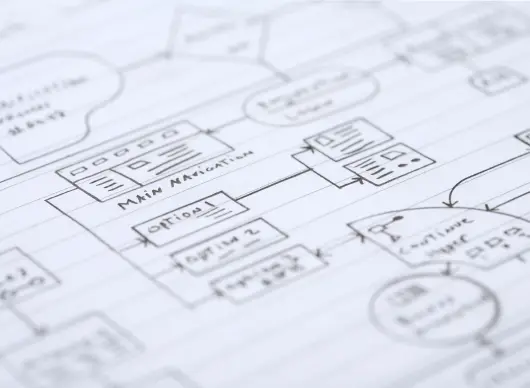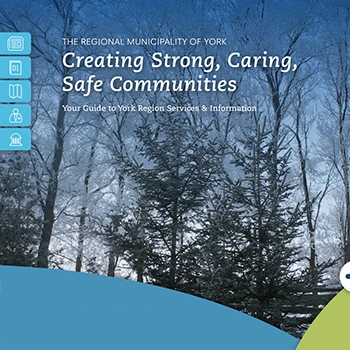What makes information architecture a strategic business decision rather than just organizing content?
Information architecture shapes how users understand and navigate your digital ecosystem, directly impacting customer satisfaction, task completion rates, and business outcomes. Through our Experience Thinking framework, we examine how your content experience connects to your broader brand, product, and service experiences. A strategic approach considers future business goals, user behavior patterns, and competitive positioning rather than simply reorganizing existing content. When users can't find what they need, it affects conversion rates, support costs, and brand perception. Strategic information architecture anticipates business growth, content evolution, and changing user expectations to create scalable foundations that adapt over time.
Tip: Start by documenting how current findability issues impact your key business metrics before engaging consultants to establish clear success measures.
How does modern information architecture differ from traditional website organization approaches?
Modern information architecture goes beyond hierarchical site maps to create adaptive, user-centered content ecosystems that work across multiple touchpoints and devices. Today's approach integrates behavioral data, advanced user research, and cross-channel consistency while considering voice interfaces, AI-powered search, and personalization capabilities. Unlike traditional approaches that focused on internal organizational logic, contemporary IA design starts with user mental models and task flows. The process includes content strategy, findability optimization, and seamless integration with broader digital experiences. Modern IA also considers content lifecycle management, automated tagging systems, and analytics-driven optimization rather than one-time structural design.
Tip: Assess your current architecture against user journey maps and cross-device usage patterns to identify gaps that modern IA approaches could address.
What role does foresight design play in creating future-ready information architectures?
Foresight design in information architecture involves anticipating how content needs, user behaviors, and technology capabilities will evolve to create structures that remain relevant and scalable. This approach combines trend analysis, scenario planning, and strategic thinking to design architectures that can accommodate emerging content types, new interaction methods, and evolving business models. We analyze industry direction, user expectation changes, and technological advancement patterns to inform architectural decisions. Foresight design helps avoid costly restructuring by building flexibility and extensibility into the foundation. This methodology considers how AI, voice interfaces, and personalization trends will impact content organization and user navigation patterns.
Tip: Map your content growth projections and technology roadmap against your current architecture to identify areas where foresight design could prevent future limitations.
How do you approach information architecture for organizations with complex, multi-audience content needs?
Complex, multi-audience architectures require sophisticated approaches that balance diverse user goals while maintaining organizational coherence. We start by mapping distinct user personas, their content consumption patterns, and task completion paths to understand how different audiences interact with your content ecosystem. Our approach creates flexible navigation systems that surface relevant content for each audience while maintaining intuitive overall structure. Through card sorting studies and user journey analysis, we identify content intersections and develop faceted organization systems that serve multiple user types. The solution often involves layered navigation, role-based content filtering, and adaptive content recommendations that personalize the experience while preserving architectural integrity.
Tip: Document your different audience segments' content priorities and usage scenarios before architectural planning to ensure the structure serves all user types effectively.
What's the relationship between information architecture and content strategy in digital transformation initiatives?
Information architecture and content strategy work together as foundational elements of digital transformation, with IA providing the structural framework while content strategy defines the governance, creation, and optimization processes. Our Experience Thinking approach integrates these disciplines to ensure content serves both user needs and business objectives across all digital touchpoints. IA creates the organizational framework that supports content strategy implementation, while content strategy informs architectural decisions about categorization, metadata, and content relationships. This integration becomes critical during digital transformation when organizations need to consolidate multiple content sources, establish new governance models, and create consistent experiences across channels. The relationship also involves planning for content evolution, automated content management, and analytics-driven optimization.
Tip: Align your content governance processes with your planned information architecture early in transformation planning to avoid structural conflicts during implementation.
How does information architecture impact SEO and digital marketing effectiveness?
Well-designed information architecture significantly improves SEO performance by creating logical content hierarchies, clear URL structures, and semantic relationships that search engines can understand and index effectively. Our approach ensures that architectural decisions support keyword strategy, topic clustering, and content discoverability while maintaining user-focused navigation. Strategic IA planning includes internal linking strategies, canonical content organization, and structured data implementation that enhances search visibility. The architecture also supports content marketing by creating logical pathways for content consumption and conversion optimization. Additionally, clear IA improves site performance metrics like bounce rate and time on site, which contribute to search ranking factors.
Tip: Audit your current content organization against your keyword strategy and topic clusters to identify architectural improvements that could boost search performance.
What makes information architecture particularly challenging for enterprise organizations?
Enterprise information architecture complexity stems from multiple stakeholder requirements, legacy system constraints, regulatory compliance needs, and diverse user bases across different departments and regions. We address these challenges through stakeholder alignment workshops, content audit processes that map to business functions, and architectural solutions that accommodate both centralized governance and distributed content management. Enterprise IA must also consider integration with existing enterprise systems, security requirements, and change management processes. Our approach includes developing implementation roadmaps that address technical constraints while building organizational capability for ongoing IA management. The solution often involves creating IA governance frameworks and training programs that enable sustainable architecture evolution.
Tip: Map your organizational decision-making processes and technical constraints before architectural planning to identify potential implementation challenges early.
What research methods do you use to understand user mental models for information architecture?
We employ multiple research methods to uncover how users conceptualize and categorize information, including open and closed card sorting studies, tree testing, first-click analysis, and user interviews focused on information-seeking behavior. Our research approach combines quantitative analysis of user grouping patterns with qualitative insights about reasoning and mental models. We conduct moderated card sorting sessions to understand user thinking processes and unmoderated studies for larger sample sizes and statistical validation. User journey mapping reveals how people navigate complex information spaces, while competitive analysis identifies industry patterns and user expectations. This multi-method approach ensures our architectural recommendations align with user intuition while supporting business objectives.
Tip: Include both domain experts and novice users in your research to understand how expertise level affects information categorization and navigation preferences.
How do you validate information architecture designs before implementation?
Architecture validation combines multiple testing approaches including tree testing for navigation effectiveness, first-click testing for intuitive pathfinding, and prototype usability testing for overall user experience. We create interactive prototypes that allow users to navigate proposed structures while completing realistic tasks, measuring success rates, time to completion, and user confidence levels. Our validation process includes A/B testing different architectural approaches, analytics review of existing user behavior patterns, and stakeholder review sessions to ensure business requirement alignment. Post-implementation validation includes ongoing analytics monitoring, user feedback collection, and periodic architecture audits to identify optimization opportunities. This iterative approach ensures the architecture performs as intended while providing data for continuous improvement.
Tip: Establish baseline metrics from your current architecture before testing new designs to quantify improvement and validate design decisions with concrete data.
What's your approach to conducting content audits for large, complex websites?
Large content audits require systematic approaches that balance thoroughness with efficiency, using automated tools for initial inventory combined with manual analysis for content quality and relevance assessment. We develop sampling strategies for massive content libraries, focusing audit depth on high-impact areas while conducting broader analysis across the entire content ecosystem. Our audit process evaluates content accuracy, duplication, gaps, performance metrics, and alignment with user needs and business goals. We analyze content relationships, categorization consistency, and metadata quality to inform architectural decisions. The audit includes stakeholder interviews to understand content creation processes, ownership structures, and maintenance challenges that impact long-term architecture sustainability.
Tip: Prioritize content audit effort based on traffic data and business impact rather than trying to analyze every piece of content with equal depth.
How do you handle information architecture research when users have diverse technical skill levels?
We design research approaches that accommodate varying technical literacy by using multiple task complexity levels, providing clear context for unfamiliar concepts, and analyzing results across user skill segments. Our research methodology includes screening for technical expertise levels and ensuring representative sampling across your user base. We adapt research tools and terminology for different skill levels while maintaining consistency in core measurement approaches. Analysis considers how technical proficiency affects navigation patterns, content consumption preferences, and task completion strategies. Our recommendations include architectural solutions that work effectively for both novice and expert users, often through progressive disclosure and adaptive navigation approaches.
Tip: Segment your research analysis by user technical skill level to identify where simplified navigation or advanced shortcuts might improve overall architecture effectiveness.
What role does competitive analysis play in information architecture development?
Competitive analysis in IA development reveals industry standards, user expectations, innovation opportunities, and potential differentiation strategies while avoiding common structural pitfalls. We analyze competitor navigation patterns, content organization approaches, search functionality, and user pathway designs to understand market baseline expectations. Our analysis includes evaluation of successful innovations, identification of common user frustrations, and assessment of competitive advantages gained through superior information organization. This research informs decisions about when to follow established conventions and when to innovate beyond industry norms. The analysis also reveals gaps in competitive offerings that present opportunities for strategic differentiation through superior content organization and findability.
Tip: Focus competitive analysis on organizations that serve similar user needs rather than just direct business competitors to identify broader IA innovation opportunities.
How do you adapt research methods for international or culturally diverse user bases?
International IA research requires cultural adaptation of methods, terminology, and content examples while maintaining research validity across different cultural contexts. We modify card sorting content to use culturally appropriate examples, adjust research protocols for different communication styles, and ensure local language nuances are preserved in translation. Our approach includes understanding cultural differences in information hierarchy preferences, authority indicators, and navigation expectations. We conduct research with local teams or cultural consultants to ensure accurate interpretation of user behavior patterns. The resulting architecture recommendations consider cultural factors while creating coherent experiences that work across diverse user groups and markets.
Tip: Partner with local cultural experts during research design and analysis to avoid misinterpreting user behavior patterns that may have cultural rather than usability explanations.
What analytics and quantitative data do you analyze for information architecture insights?
We analyze user flow patterns, search query data, page exit rates, navigation pathway analysis, and task completion metrics to understand how users actually navigate existing architectures. Our analytics review includes heat mapping analysis, scroll depth data, internal search performance, and conversion funnel analysis to identify structural problems and optimization opportunities. We examine mobile versus desktop navigation differences, seasonal usage pattern changes, and user segment behavior variations to inform adaptive architecture approaches. This quantitative foundation complements qualitative research and provides ongoing optimization data after implementation. Analytics also reveal content performance gaps and user pathway inefficiencies that qualitative research might miss.
Tip: Establish analytics tracking for specific IA elements before and after implementation to measure improvement and identify areas needing ongoing optimization.
How do you balance user mental models with business organizational needs in architecture design?
Balancing user mental models with business requirements involves creating hybrid approaches that honor user intuition while supporting organizational objectives and content management realities. Our Experience Thinking methodology examines how business processes, content creation workflows, and user expectations can align through thoughtful architectural design. We facilitate workshops between user advocates and business stakeholders to identify compromise solutions that serve both needs. Often this involves creating multiple navigation pathways, layered information hierarchies, or faceted organization systems that present information according to user logic while maintaining business-friendly backend organization. The solution prioritizes user experience while ensuring content maintenance and business process sustainability.
Tip: Map your content creation and approval processes alongside user navigation patterns to identify where organizational needs conflict with user expectations and plan compromise solutions.
What's your process for creating scalable information architectures that grow with organizations?
Scalable architecture design involves creating flexible frameworks that accommodate content growth, new content types, and evolving user needs without requiring fundamental restructuring. We establish architectural principles and patterns that guide future content organization while building extensible category systems and metadata frameworks. Our approach includes designing governance processes that maintain architectural integrity as content volume and contributors increase. We create documentation and training materials that help organizations make consistent architectural decisions as they grow. The scalable design also considers technical implementation requirements, ensuring the architecture can be supported by content management systems and maintains performance as complexity increases.
Tip: Plan for at least 3x your current content volume when designing architectural frameworks to avoid early scaling limitations.
How do you approach information architecture for omnichannel and cross-platform experiences?
Omnichannel information architecture requires creating content organization systems that maintain coherence across web, mobile, voice, and other interaction channels while adapting to each platform's constraints and opportunities. Our approach starts with platform-agnostic content modeling that defines information relationships independent of presentation layer. We develop adaptive navigation strategies that translate core architectural principles across different interface types and interaction methods. This includes considering how voice search affects content hierarchy, how mobile usage patterns influence navigation depth, and how cross-device user journeys maintain continuity. The solution creates content and organizational flexibility that supports consistent experiences regardless of user access method.
Tip: Audit user journeys across all your current channels to identify inconsistencies in content organization and navigation that omnichannel architecture could resolve.
What's involved in creating information architecture documentation and governance frameworks?
Comprehensive IA documentation includes architectural principles, category definitions, metadata schemas, navigation guidelines, and decision-making frameworks that guide ongoing content organization decisions. We create living documentation that evolves with organizational needs while maintaining architectural integrity. Our governance frameworks establish roles, responsibilities, and processes for architectural maintenance, content categorization decisions, and structural updates. Documentation includes user research insights, design rationale, implementation guidelines, and success metrics that help organizations understand and maintain the architecture effectively. We also develop training materials and decision trees that help content creators and managers make architecturally consistent choices.
Tip: Invest in detailed governance documentation from the start rather than trying to reverse-engineer decision-making frameworks after architecture problems emerge.
How do you handle information architecture for sites with frequently changing or time-sensitive content?
Dynamic content architectures require flexible organizational systems that can accommodate content lifecycle changes, seasonal variations, and time-sensitive information without constant structural modification. We design automated categorization approaches, date-based organization schemes, and content archiving strategies that maintain findability as content ages or becomes obsolete. Our approach includes creating multiple organizational pathways such as chronological, topical, and popularity-based access methods. We establish content refresh processes and architectural maintenance schedules that keep the structure current with content reality. The design also considers how to surface both evergreen and timely content appropriately for different user goals.
Tip: Establish content lifecycle policies alongside architectural planning to prevent outdated content from degrading overall site organization and user experience.
What techniques do you use for complex taxonomy development and management?
Complex taxonomy development involves hierarchical analysis, semantic relationship mapping, and controlled vocabulary creation that supports both human navigation and system interoperability. We conduct extensive stakeholder interviews to understand domain language variations, analyze existing categorization approaches, and identify semantic overlaps and gaps. Our taxonomy development process includes relationship modeling, synonym management, and cross-reference creation that supports multiple classification approaches. We create taxonomy governance processes that maintain consistency while allowing organic evolution based on usage patterns and business changes. The taxonomies integrate with content management systems and support automated tagging, search enhancement, and content recommendation systems.
Tip: Start taxonomy development with your most important content categories and user tasks rather than trying to create complete taxonomies before testing user comprehension and usage patterns.
How do you integrate AI and machine learning considerations into information architecture planning?
AI integration in information architecture involves designing content organization systems that support machine learning algorithms while maintaining human usability and understanding. We plan metadata structures and content tagging approaches that enable automated content recommendations, personalization engines, and intelligent search functionality. Our architectural approach considers how natural language processing affects content discovery, how user behavior data can inform adaptive navigation, and how automated content categorization can supplement human organization efforts. We design for hybrid human-AI content management while ensuring the architecture remains comprehensible and manageable without AI assistance. This future-ready approach anticipates how AI capabilities will enhance rather than replace thoughtful information organization.
Tip: Plan your metadata and tagging strategies to support both current manual processes and future AI-powered content management capabilities.
What technical constraints typically impact information architecture implementation?
Technical constraints include content management system limitations, database structure requirements, performance considerations, and integration needs with existing enterprise systems. We work closely with development teams to understand platform capabilities, URL structure requirements, and navigation implementation possibilities before finalizing architectural recommendations. Our approach considers how technical limitations might affect user experience and identifies alternative solutions that achieve similar user outcomes within technical boundaries. We also assess the cost-benefit tradeoffs of technical modifications versus architectural adjustments. Implementation planning includes phased rollout strategies that work within development resource constraints while maintaining user experience quality throughout the transition.
Tip: Involve your technical team in early architectural discussions to identify implementation constraints and opportunities rather than discovering limitations during development.
How do you manage information architecture transitions without disrupting existing user workflows?
Smooth IA transitions require careful migration planning, user communication strategies, and gradual implementation approaches that minimize workflow disruption. We develop transition plans that maintain familiar navigation elements while introducing improvements incrementally. Our approach includes URL redirect strategies, legacy content preservation, and user education materials that help users adapt to new organizational systems. We monitor user behavior during transitions and provide feedback mechanisms for users experiencing difficulties. Phased implementation allows for adjustment based on user response while maintaining business continuity. Post-transition support includes user assistance resources and ongoing optimization based on adoption patterns.
Tip: Plan transition communication and user support resources before architecture changes go live rather than responding to user confusion after implementation.
What's your approach to information architecture testing and quality assurance during implementation?
IA testing during implementation involves systematic validation of navigation functionality, content discoverability, search integration, and cross-device compatibility. We conduct staged testing that evaluates architectural performance at different implementation phases, identifying issues before they affect end users. Our quality assurance process includes link validation, category consistency checking, metadata accuracy verification, and user pathway testing. We test edge cases, error conditions, and high-traffic scenarios to ensure architectural stability under various conditions. Testing also includes performance impact assessment, ensuring that complex navigational structures don't negatively affect site speed or user experience.
Tip: Establish testing protocols for both automated checks and human validation to catch architectural issues that might not be apparent in technical testing alone.
How do you measure information architecture success after implementation?
IA success measurement combines quantitative metrics like task completion rates, time to find information, search success rates, and user pathway efficiency with qualitative feedback about user satisfaction and confidence. We establish baseline measurements before implementation and track improvement in findability, navigation efficiency, and user goal achievement. Our measurement approach includes ongoing analytics monitoring, periodic user feedback collection, and comparative analysis against industry benchmarks. Success metrics align with business objectives such as reduced support costs, improved conversion rates, and enhanced user engagement. Long-term measurement includes architecture maintainability, content creation efficiency, and organizational capability development.
Tip: Define success metrics that connect user experience improvements to business outcomes to maintain organizational support for ongoing IA investment and optimization.
What ongoing maintenance and optimization does information architecture require?
Ongoing IA maintenance involves regular content audit cycles, user behavior analysis, category performance monitoring, and architectural adjustment based on changing user needs and business requirements. We establish maintenance schedules that review content organization effectiveness, identify emerging categorization needs, and address user feedback about navigation difficulties. Our optimization approach includes A/B testing of architectural variations, seasonal adjustment planning, and integration of new content types or business functions. Maintenance also involves training content creators and managers to make architecturally consistent decisions and updating documentation as the structure evolves.
Tip: Budget for ongoing IA maintenance as operational expense rather than treating architecture as one-time implementation to ensure long-term effectiveness and user satisfaction.
How do you handle information architecture for organizations with limited technical resources?
Resource-constrained IA solutions focus on maximizing impact within available technical and human resources through strategic prioritization and phased implementation approaches. We identify high-impact architectural improvements that require minimal technical modification, design solutions that work within existing system capabilities, and create implementation plans that spread resource requirements over time. Our approach includes training internal resources to handle ongoing architectural maintenance and providing simplified governance frameworks that don't require specialized expertise. We also identify opportunities for low-cost architectural improvements that deliver significant user experience gains.
Tip: Focus initial IA improvements on areas with highest user traffic and business impact to maximize return on limited implementation resources.
What role does change management play in successful information architecture implementation?
Change management in IA implementation involves stakeholder communication, user education, organizational process adjustment, and cultural adaptation to new content organization approaches. We develop change management strategies that address both user and internal stakeholder concerns about architectural modifications. Our approach includes training programs for content creators, communication plans for user communities, and feedback mechanisms for addressing adoption challenges. Change management also involves adjusting business processes to align with new architectural approaches and creating organizational capabilities for ongoing IA evolution. Success requires both technical implementation and cultural acceptance of new information organization paradigms.
Tip: Start change management planning during architecture design rather than waiting until implementation to address organizational and user adoption challenges.
How does information architecture connect to broader user experience strategy through Experience Thinking?
Information architecture forms the content experience quadrant within our Experience Thinking framework, connecting directly to brand, product, and service experiences to create holistic user journeys. Content organization affects how users perceive brand personality through navigation language and information hierarchy. IA decisions impact product experience through task flow efficiency and feature discoverability. Service experience benefits from well-organized support content and clear process guidance. This integrated approach ensures information architecture supports broader experience goals rather than functioning in isolation. Our methodology examines how content findability connects to overall user satisfaction, brand perception, and business objectives across all touchpoints.
Tip: Map how your information architecture affects user perceptions across brand, product, and service experiences to identify integration opportunities that amplify overall experience quality.
What's the relationship between information architecture and brand experience design?
Information architecture expresses brand personality through navigation language, content categorization approaches, and information hierarchy design that reinforces brand values and positioning. The way content is organized and labeled communicates brand attributes like professionalism, accessibility, innovation, or expertise. IA decisions affect how users understand brand scope, capabilities, and values through content exposure and pathway design. Our approach ensures architectural choices align with brand strategy while supporting functional user needs. This integration helps create consistent brand experiences where content organization reinforces rather than contradicts intended brand perception. Strategic IA can differentiate brands through superior information organization and user guidance.
Tip: Audit your current navigation language and content categorization against your brand personality attributes to identify alignment opportunities.
How do you integrate information architecture with service design and customer journey optimization?
IA integration with service design ensures that information organization supports end-to-end customer journeys rather than just individual content consumption tasks. We map how content needs change across service lifecycle phases and design architectural approaches that surface relevant information at appropriate journey moments. Our service design integration includes connecting self-service content with assisted service options, organizing support information to reduce service burden, and creating content pathways that guide users through complex service processes. The architecture supports both digital and human service touchpoints through consistent information organization and terminology. This integration reduces service costs while improving customer satisfaction through better self-service capabilities.
Tip: Map your customer service contact drivers against your current information architecture to identify where better content organization could reduce support volume.
What role does information architecture play in product experience and user onboarding?
Information architecture in product experience ensures that users can discover features, understand capabilities, and access support resources through intuitive content organization that mirrors product structure and user task flows. IA design affects onboarding success by organizing introductory content, tutorial sequences, and progressive feature disclosure in ways that match user learning patterns. Our approach aligns information hierarchy with product functionality hierarchy while considering how users build expertise over time. The architecture supports both novice exploration and expert efficiency through layered information access and multiple navigation pathways. This integration helps users develop product mastery while reducing abandonment during critical onboarding phases.
Tip: Analyze your product feature adoption patterns against your current information organization to identify where better IA could improve feature discovery and usage.
How does foresight design influence long-term information architecture planning?
Foresight design in IA planning involves analyzing content evolution trends, user behavior changes, and technology developments to create architectures that remain effective as conditions change. We examine industry direction, user expectation evolution, and emerging content types to design flexible organizational systems. Our foresight approach considers how voice interfaces, AI-powered search, and personalization capabilities will affect information discovery patterns. We also analyze business growth trajectories and market expansion plans to ensure architecture can accommodate future content needs and user segments. This forward-thinking design prevents costly restructuring while positioning organizations to take advantage of emerging opportunities in content organization and user guidance.
Tip: Include business growth scenarios and technology adoption plans in your IA planning discussions to ensure architectural decisions support rather than constrain future opportunities.
What's your approach to creating coherent experiences across different content types and formats?
Coherent cross-format experiences require organizational frameworks that maintain user understanding regardless of content type while optimizing each format's unique characteristics and consumption patterns. We develop content architecture that creates logical relationships between articles, videos, interactive tools, downloadable resources, and other formats through consistent categorization and cross-referencing approaches. Our methodology ensures that users can navigate smoothly between different content formats while pursuing their goals. This includes creating content recommendation systems, related content connections, and format-specific optimization that maintains overall architectural coherence. The approach also considers how different content types serve different user needs and stages in the experience lifecycle.
Tip: Map how your users consume different content formats across their journey to identify opportunities for better cross-format content organization and recommendations.
How do you balance information architecture consistency with personalization and adaptive content delivery?
Balancing architectural consistency with personalization involves creating stable organizational frameworks that support customized content delivery without confusing user navigation or undermining findability for non-personalized users. We design IA systems that maintain familiar navigation patterns while enabling content filtering, adaptive recommendations, and role-based information presentation. Our approach includes developing personalization that enhances rather than replaces standard architectural pathways. This involves creating multiple content access methods, ensuring personalization algorithms respect architectural logic, and maintaining content discoverability for users who prefer browsing over personalized feeds. The solution supports both serendipitous discovery and targeted content delivery within coherent organizational systems.
Tip: Test your personalization approaches with users who prefer different content discovery methods to ensure adaptive features enhance rather than replace effective browsing capabilities.
How does improved information architecture affect internal content creation and management processes?
Improved information architecture streamlines content creation by providing clear categorization guidelines, reducing content duplication, and creating logical workflows that align with organizational structure and user needs. Well-designed IA helps content creators understand where new content belongs, how it relates to existing information, and what gaps need filling. Our architectural solutions include governance frameworks that guide content decision-making, metadata schemas that improve content findability, and organizational systems that reduce content management overhead. Better architecture also improves content performance measurement by creating logical groupings for analytics analysis and content optimization. This leads to more efficient content operations and better resource allocation across content creation initiatives.
Tip: Include content creators and managers in architectural planning to ensure new structures support rather than complicate their workflows and responsibilities.
What training and capability building do you provide for ongoing information architecture management?
We provide training programs that build organizational capability for architectural maintenance, content categorization decision-making, and ongoing optimization without constant external consultation. Our training approach includes workshops for content creators, documentation for decision-makers, and governance frameworks that guide architectural consistency. We develop organizational capabilities in user research methods, architectural analysis, and performance measurement that enable ongoing IA evolution. Training materials include decision trees for content organization, best practices for category management, and troubleshooting guides for common architectural challenges. Our capability building ensures organizations can maintain and evolve their information architecture as business needs and user requirements change.
Tip: Identify internal champions for IA maintenance during the design process to ensure knowledge transfer and ongoing architectural advocacy within your organization.
How do you help organizations build consensus around information architecture decisions?
Building IA consensus involves facilitating stakeholder workshops, presenting user research evidence, and creating collaborative decision-making processes that balance diverse organizational perspectives with user needs. We guide organizations through architectural decision frameworks that prioritize user outcomes while addressing business requirements and technical constraints. Our consensus-building approach includes stakeholder interviews, collaborative design sessions, and evidence-based decision making that reduces subjective disagreements. We help organizations develop shared language around IA concepts and create governance processes that prevent future architectural conflicts. The process also includes change management strategies that address concerns about structural modifications and their impact on different organizational functions.
Tip: Document the reasoning behind architectural decisions during the design process to help resolve future disagreements and maintain stakeholder alignment over time.
What ROI and business value metrics demonstrate information architecture success?
IA business value manifests through improved task completion rates, reduced support costs, increased user engagement, higher conversion rates, and decreased content maintenance overhead. We help organizations identify metrics that connect information findability to business outcomes such as sales completion, lead generation, customer satisfaction, and operational efficiency. Our measurement approach includes before-and-after analysis of user behavior, cost analysis of content management processes, and correlation analysis between findability improvements and business performance. ROI calculation includes implementation costs versus benefits like reduced support volume, improved conversion rates, and decreased content creation duplication. Long-term value includes organizational capability development and competitive advantage through superior user experiences.
Tip: Establish baseline measurements of current user behavior and business costs before architecture implementation to quantify improvement and demonstrate clear ROI.
How does information architecture maturity affect organizational digital capabilities?
IA maturity progression involves evolving from ad-hoc content organization to strategic information architecture that enables advanced digital capabilities like personalization, automation, and cross-channel consistency. Mature IA organizations have established governance processes, consistent categorization approaches, and user-centered design capabilities that support sophisticated digital experiences. Our maturity assessment examines current architectural capabilities, organizational processes, and strategic integration to identify advancement opportunities. Higher IA maturity enables organizations to implement AI-powered content recommendations, create seamless omnichannel experiences, and respond quickly to changing user needs through flexible architectural frameworks. Mature organizations also develop competitive advantages through superior information organization and user guidance capabilities.
Tip: Assess your current IA maturity against industry benchmarks to identify specific capability gaps that could be limiting your digital transformation progress.
What change management considerations are unique to information architecture projects?
IA change management addresses both user adaptation to new navigation patterns and internal stakeholder adjustment to modified content organization and governance processes. We develop change strategies that account for user mental model disruption, content creator workflow changes, and potential temporary productivity decreases during transition periods. Our approach includes user communication about architectural benefits, training for internal stakeholders on new processes, and feedback mechanisms for addressing adoption challenges. Change management also involves managing expectations about implementation timelines and user adaptation periods. Success requires balancing innovation with familiarity to prevent user alienation while achieving architectural improvements.
Tip: Plan for extended user adaptation periods and temporary performance decreases while users learn new navigation patterns rather than expecting immediate adoption of architectural changes.
How do you address information architecture challenges in regulated industries with compliance requirements?
Regulated industry IA must balance user experience optimization with compliance documentation, audit trail requirements, and regulatory content organization mandates. We develop architectural solutions that satisfy regulatory requirements while maintaining user-friendly navigation and content discovery. Our approach includes understanding compliance implications of categorization decisions, creating audit-friendly documentation processes, and designing architectures that support both regulatory reporting and user task completion. We work with compliance teams to ensure architectural decisions don't create regulatory risks while advocating for user experience within regulatory constraints. The solution often involves creating multiple organizational layers that serve regulatory needs without confusing end users.
Tip: Involve compliance stakeholders early in architectural planning to identify regulatory constraints and opportunities rather than discovering conflicts during implementation.
How do you future-proof information architecture for AI and machine learning integration?
Future-proofing IA for AI involves designing metadata structures, content tagging approaches, and organizational frameworks that enable machine learning while maintaining human comprehensibility and management capability. We plan architectural foundations that support automated content recommendations, intelligent search enhancement, and personalization engines without requiring fundamental restructuring. Our approach includes semantic relationship modeling that AI systems can interpret, content lifecycle tracking that supports automated optimization, and flexible categorization systems that accommodate algorithmic improvements. Future-ready architecture also considers how natural language processing affects content organization and how user behavior data can inform adaptive navigation while preserving user privacy and control.
Tip: Design your content metadata and categorization systems to be both human-readable and machine-interpretable to support current management needs and future AI capabilities.
What considerations are important for voice interface and conversational AI information architecture?
Voice interface IA requires restructuring information hierarchies for conversational interaction patterns rather than visual navigation, focusing on natural language categorization and sequential information delivery. We design content organization that supports voice search optimization, conversational flow development, and audio-first information consumption. Our approach considers how spoken queries differ from typed searches, how users navigate complex information spaces through conversation, and how to maintain context across multi-turn voice interactions. Voice-ready architecture includes content chunking for audio delivery, relationship modeling for follow-up questions, and integration planning for voice-enabled content management systems.
Tip: Analyze your current content structure for opportunities to create voice-friendly information chunks and natural language categorization that improves both voice and traditional interfaces.
How does information architecture need to evolve for AR/VR and spatial computing interfaces?
Spatial computing IA involves reimagining information organization for three-dimensional environments where content relationships can be expressed through spatial proximity, visual connections, and environmental context rather than traditional hierarchical navigation. We design organizational approaches that leverage spatial memory and environmental wayfinding while maintaining logical content relationships. Our methodology considers how users navigate information spaces in AR/VR environments, how spatial context affects content relevance, and how to create intuitive information discovery in immersive interfaces. Spatial IA also addresses the integration between virtual information organization and physical environment context to create coherent mixed-reality experiences.
Tip: Experiment with spatial organization concepts for your current content to identify relationships and groupings that could translate effectively to future AR/VR interfaces.
What role will generative AI play in content organization and information architecture?
Generative AI in IA enables automated content categorization, dynamic taxonomy generation, and adaptive organizational structures that evolve based on user behavior and content performance patterns. We design architecture frameworks that leverage AI for content tagging, category suggestion, and relationship identification while maintaining human oversight and quality control. Our approach considers how AI can augment human decision-making in content organization without replacing strategic architectural thinking. Generative AI integration includes automated content gap identification, category optimization suggestions, and personalized navigation generation that maintains overall architectural coherence. The technology also enables real-time content organization adaptation based on emerging trends and user feedback.
Tip: Identify specific content organization tasks where AI assistance could improve efficiency while planning human oversight processes to maintain quality and strategic alignment.
How do you design information architecture for IoT and connected device ecosystems?
IoT information architecture involves organizing content and functionality across multiple connected devices while maintaining user understanding of system capabilities and information sources. We design organizational frameworks that work across different device types, screen sizes, and interaction methods while preserving content relationships and user context. Our approach includes developing device-appropriate content delivery, cross-device synchronization strategies, and unified navigation concepts that adapt to different hardware capabilities. IoT IA also addresses data privacy, content relevance filtering, and context-aware information presentation that responds to user location, device capabilities, and environmental conditions.
Tip: Map your content and functionality requirements across different device types in your ecosystem to identify organizational patterns that work effectively across all platforms.
What emerging content types and formats require new information architecture approaches?
Emerging content formats like interactive visualizations, AR/VR experiences, AI-generated content, and real-time collaborative documents require architectural approaches that accommodate dynamic content, non-linear consumption patterns, and format-specific organization needs. We develop flexible categorization systems that work across traditional and emerging content types while maintaining user navigation consistency. Our approach includes planning for content formats that don't exist yet, creating extensible organizational frameworks, and designing metadata systems that support evolving content characteristics. Future-ready architecture also considers how content creation automation affects organization patterns and how user expectations change with new content format adoption.
Tip: Create content type categories broad enough to accommodate future format innovations while maintaining specific enough organization for current content management needs.












